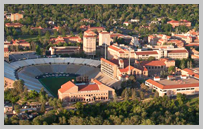Assistant Professor José Ibarra Reimagines Design Education’s Approach to Addressing Climate Change
At the intersection of architecture, environmental studies, and the sciences, José Ibarra, an assistant professor at the University of Colorado Denver’s College of Architecture and Planning, is redefining how design education responds to climate change. By breaking down disciplinary boundaries and combining speculative thinking with scientific methods, Ibarra addresses urgent questions about the future of the built environment and design.
Ibarra asks, “What role can architecture play on a warming planet? And how can design better reflect long-term ecological shifts and our connections to the more-than-human world?”
These questions are at the heart of Ibarra’s creative and scholarly work, which recently earned national recognition. In 2025, he received an Honorable Achievement for Interdisciplinary Climate Change Curriculum in Architecture from Tulane University. The award recognizes Ibarra’s design studio course, Climate Forecasts: Architecture in 2100, which he taught at Cornell University during a visiting appointment during the Fall 2024 semester.
Responding to a Crisis of Imagination
Ibarra’s Fall 2024 studio is just one piece of a larger effort that has taken root at CU Denver. Through graduate design studios—like his second-year class, Gold/Mine, and third-year studio, Andean Ecologies, Cosmologies, and Fictions, along with book projects and creative practices—Ibarra models a vision of architecture that is imaginative, research-driven and cross-disciplinary.
His teaching draws from fields like literature, philosophy, anthropology, geology and landscape studies to help students design in ways that respond to deep time, local traditions and environmental change.
“What we’re undergoing is not a crisis of information; we have the technical knowledge,” said Ibarra. “It’s a crisis of imagination. The role of architecture is not only to solve problems, but to shift paradigms, to dream with and for the planet.”
Interdisciplinary Climate Change Curriculum in Architecture
[Aqua Earth, (Cripple Creek, CO) featuring multiple shades of brown and red sand in a glass box.]
[A topographical model with thin threads of rope demonstrating the Hydro Institute in Blue Mesa Reservoir, CO.]
[A short wooden table with cables and nails representing Circular Mining on the site of the Upper Peninsula, MI and developed for Climate Forecasts: Architecture in 2100 taught by José Ibarra in Fall 2024.]
In Climate Forecasts: Architecture in 2100, students imagined what life could look like in a world that is four degrees Celsius warmer, a reality the world expects to confront in under 75 years. Through course phases titled, “Vernacular Ecologies,” “Geo-Performative Representations,” and “Trans-Scalar Fictions,” the class pulled together ideas from architecture, geology, anthropology and speculative fiction. Students used drawing, modeling, video and storytelling to design climate-responsive architecture that looked beyond high-tech fixes and toward creative, adaptive futures.
The course expanded on earlier work Ibarra led at CU Denver, including Andean Ecologies, Cosmologies, and Fictions, where students studied ancient and modern practices across the Andes to design long-term, ecologically rooted architecture. Both studios encouraged students to think across time and space, tasking them with designing not just for specific places but for future generations, shifting climates and cultural continuity.
Coming Soon: Architecture, Time, and the Anthropocene: Designing with Geoempathy
This kind of boundary-crossing is central to Ibarra’s larger body of work. His upcoming book, Architecture, Time, and the Anthropocene: Designing with Geoempathy (under contract with Routledge), builds on these ideas. It presents a framework for architecture rooted in empathy—across species, materials and time scales.
Drawing on the work of thinkers like Elizabeth Povinelli, Timothy Morton, Octavia E. Butler and Jeff VanderMeer, Ibarra explores how architecture can help shape our relationships with animals, landscapes, weather and the ground itself. Through case studies ranging from ancient Andean buildings to surrealist art and contemporary climate fiction, the book calls for a new way of thinking about architecture—one that embraces complexity, narrative and collaboration with the natural world.
His creative studios, Studio José Ibarra and House Operations, bring these ideas into real-world spaces, performances and collaborative projects. Each effort explores how communities might respond to environmental and social challenges through design processes rooted in empathy, adaptability and shared storytelling.
Whether developing speculative infrastructure for future climates, exploring the beliefs embedded in ancient landscapes, or guiding students in imagining more just and vibrant futures, Ibarra’s work suggests a broader role for architecture—one that goes beyond buildings and into the realm of relationships, across scales, across disciplines and across time.




